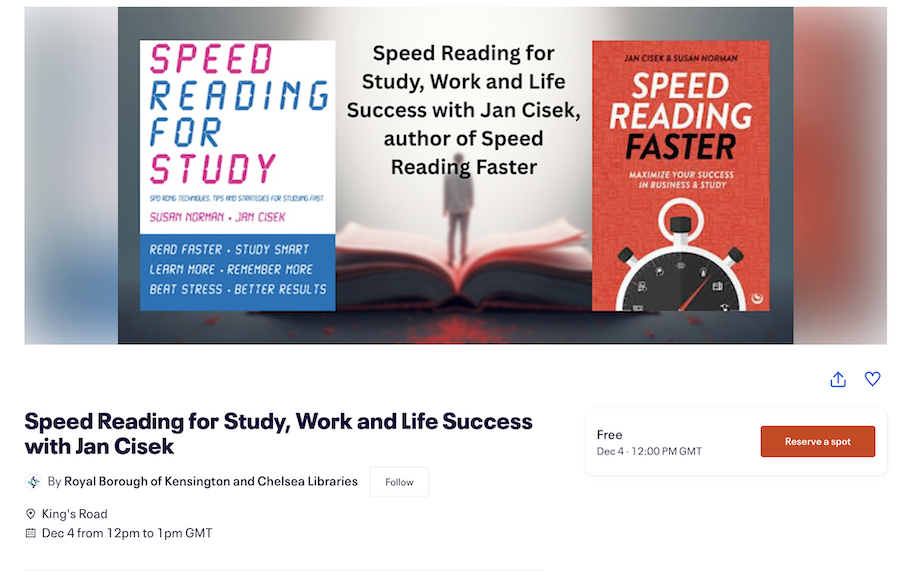Perfect for students, professionals, and avid readers, this session will improve your reading speed and also boost retention, concentration, comprehension, and accelerate your learning. Learn proven techniques and shortcuts to make speed reading simple, effective, and effortless, including how to:
- Read smarter, read more, remember more, and take control of information overload
- Identify key information
- Expand your peripheral vision
- Use AI tools
- Have more enjoyment while reading and learning
- and much more…
Through practical exercises, articles, and quizzes, you’ll be able to apply these techniques immediately, helping you become a smarter, faster, and more productive reader and speed reader, as well as a better learner.
The session is led by Jan Cisek, a world-leading expert in speed reading, accelerated learning, and study skills with over 25 years’ experience helping thousands of students and professionals worldwide, including those with dyslexia and ADHD. Jan is co-author of two leading books on speed reading, Speed Reading Faster and Spd Rdng: The Speed Reading Bible. He has integrated accelerated learning, NLP, and systems thinking into his teaching, helping learners use intuition and creativity to their full potential. Jan has presented at international conferences and is recognised for teaching practical, evidence-based techniques that improve reading efficiency, comprehension, memory, planning, and exam performance. Holding an MSc in Environmental Psychology and currently pursuing a PhD in Health Psychology, Jan brings a strong academic foundation to his training, tailoring strategies to individual needs to foster independence, confidence, and success.































 Richard Wiseman’s upcoming book
Richard Wiseman’s upcoming book  The most comprehensive book on speed reading, guiding readers through simple techniques, strategies and tips to improve their reading speed, understanding and concentration.
The most comprehensive book on speed reading, guiding readers through simple techniques, strategies and tips to improve their reading speed, understanding and concentration.





